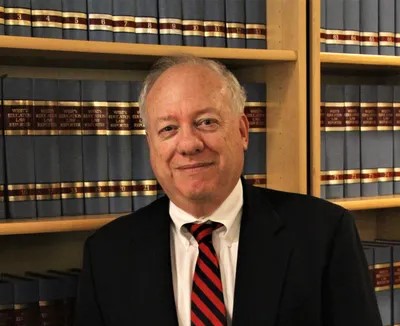At the very end of August. the Internal Revenue Service promulgated its long awaited notice about I.R.C. § 2036(c), the so-called estate tax “freeze” provision. Notice 89-99, I.R.B. 1989-39, 4. This article will provide some background relating to the section and discuss, in detail, how Notice 89-99 may affect certain estate planning and business activities.
Background
I.R.C. § 2036(c) was added to the Code by the Revenue Act of 1987 and was significantly amended by the Technical and Miscellaneous Revenue Act of 1988 (“TAMRA”). Basically, the section provides that if a person (or his or her family) owns a “substantial interest” (i.e., ten percent or more) in an “enterprise,” and “in effect” transfers to a family member or for less than full and adequate consideration in money or money’s worth, an interest which represents a “disproportionately large share” of the “potential appreciation” in that person’s interest in the enterprise, while “retaining an interest in the income of or rights in” the enterprise, then the transferred interest is includable in the transferor’s estate. The section also contains a gift tax “counterpart”, provided that if the recipient of the transferred interest re-transfers it to someone outside the transferor’s family, or if the transferor transfers the retained interest to anyone, the transferor is deemed to have made a gift equal to the then value of the originally transferred interest. Generally, a termination, lapse or other change in an interest in either the retained or the transferred property triggers the gift tax rule. See the January 1989 issue of The Chase Review for more background about I.R.C. § 2036(c).
Notice 89-99 acknowledges that many of the statute’s “operative” terms are inadequately defined and are not susceptible to a “generally accepted” interpretation. Therefore, a significant part of the Notice is devoted to explaining these critical terms. These terms include “substantial interest”, “enterprise”, “in effect transfers property”. “disproportionately large share”, “potential appreciation”, “retaining”, and “income of or rights in”.
Overview of the Notice
The Notice contains “good” and “bad” news for the taxpayer. Some of the bad news is that the Service believes that virtually any arrangement (including new ventures, debt arrangements, joint purchases and trusts) may be an enterprise, even if the transferor and his or her family do not hold a substantial interest in the underlying assets of the arrangement. This means, for example, that a so-called “granter retained income trust” (GRlT) is an enterprise even if it is funded and invested solely in cash or widely-held securities. As a result, a GRIT may avoid application of the section only if It complies with I.R.C. §2036(c)(6)—i.e., if it is a so-called “statutory GRIT.” However, requirements for statutory GRITs permit certain reversionary interests. Decedents’ estates are not treated as enterprises and certain limited types of “preferred” interests are permitted in start-up ventures without running afoul of the section.
An arrangement that involves “personal use” property exclusively is not an enterprise. Arrangements involving principal residences or life insurance, including irrevocable life insurance trusts, are per se personal use and escape the reach of I.R.C. § 2036(c). On the other hand, where “shifting” interests in appreciation are involved, assumptions are made “against” the taxpayer to cause the section to apply. The retention of income or rights need not be legally enforceable to be covered, although rights held solely in a fiduciary capacity are ignored.
Generally, the spousal unity rule (under which a wife and husband are treated as one for purposes of the section) applies only to the extent a marital deduction or an annual exclusion has been allowed.
The safe harbors created by TAMRA are to some degree expanded. However, the overall thrust of the Notice will make it extremely difficult to transfer ownership of a business and or other property interests among family members.
Scope and Type of Transactions Covered
The Notice provides that the section was intended to
“catch” not just transactions involving so-called “preferred stock (and partnership) freezes”, but other arrangements that circumvent the wealth transfer tax system. Hence, the Notice provides that the section may apply to trusts in which the granter retains certain beneficial interests such as GRITs and granter retained annuity trusts (GRATs), intrafamily sales (including installment sales, private annuities and sales of remainder interests), 1 transfer and leaseback arrangements, 2 and joint purchases of income and remainder interests.
The Notice also makes it apparent that, except with respect to certain personal use assets, the section may apply even if the transfer and the transferor’s family do not hold a 10% interest in the underlying assets (e.g., the assets transferred to and retained by a GRIT or holding company) provided they hold such an interest in the arrangement itself (e.g., the trust). 3 Furthermore, the Service quite certainly has concluded that the section can apply to new ventures and arrangements, such as where a mother and daughter purchase, respectively, income and remainder interests in property from an unrelated third party. However, as explained in more detail below, the Service will not apply the section to arrangements exclusively involving personal use property except where the personal use is subordinate to significant business or investment purposes.
Inclusion Under the Section
The Notice states that where the section applies, it causes inclusion in the transferor’s gross estate of the value of the portion of the enterprise that corresponds to the portion of the transferred appreciation that is disproportionately large. The Notice provides, as an illustration, that if a property owner transfers 50% of the appreciation and 10% of the income of her 100% interest in an enterprise in a transaction covered by the section, it causes 80% of the value of the 50% appreciation transferred to be includable in the transferor’s estate. The transferor has retained 90% of the income but only 50% of the appreciation, so that 40% of the appreciation (i.e., 80% of the 50% transferred) is brought back into her estate in order to e tore proportionality. (Although not expressly stated, it is apparent that the 50% appreciation element and the 90% income element retained by the transferor are also includable in her estate, not under I.RC. § 2036(c), but under I.R.C. § 2033, as assets directly owned at death.) The Notice further provides, however, that the amount includable under I.R.C. § 2036(c) is “reduced to the extent that the value of the corresponding portion of the transferor’s retained interest or rights is includable in the transferor’s gross estate under section 2033.” It is uncertain why such a “reduction” is necessary if I.R.C. § 2036(c) includes only the transferred interest. The Notice follows I.R.C. § 2036(c)(5) in suggesting that I.R.C. § 2036(c) includes both the transferred and retained interests, which is questionable: Alternatively, the “reduction” may mean simply that if the appreciation asset is common stock and the income asset is preferred stock, then the valuation of the common takes into account the fact that there is preferred stock outstanding. If so, it is such an obvious point, and one so well established before the enactment of I.R.C. § 2036(c), that it seems unnecessary for the Notice to state it.
Meaning of “Enterprise”
The Section applies only if transfers are made of interests in an “enterprise.” Echoing the committee reports, 4 the Notice provides that an enterprise encompasses not only an undertaking or venture for profit but also a business or other property which may produce income or gain. It includes not only an active trade or business but passive investment property and services as well. The Notice specifically provides that a trust generally is considered an enterprise. However, an estate (or revocable trust that acts as a substitute for a Will) is not considered an enterprise. Notice, p. 11.
Indeed, the Notice contains a general definition of enterprise as “any arrangement, relationship, or activity…that has significant business or investment aspects.” (Emphasis added.) Notice, p. 14. The determination of whether an arrangement is an enterprise or not ls to be based upon all facts and circumstances, including: (1) the arrangement’s inherent capability to produce income or gain, (2) the form of entity through which the activity is conducted, (3) the extent to which any property in the enterprise previously was held for business or investment purposes and (4) the property’s investment potential. In the Service’s view, an arrangement will be classified as an enterprise if the facts and circumstances reveal a “significant” business or investment aspect.
Any arrangement involving to a significant degree the conduct of a trade or business within the meaning of I.R.C. § 162 or the management, conservation or maintenance of property held for the production of income within the meaning of I.R.C. § 212, may be classified as an enterprise. This appear to mean, for example, that a purely passive holding company whose investments are restricted to cash equivalents (e.g., bank deposits) and marketable securities (of companies in which the transferor and the transferor’s family are less than 10% owners) is an enterprise. Cf. Example 1. Similarly, a GRIT funded with cash and restricted to holding only widely-traded marketable securities will be considered an enterprise under I.R.C. § 2036(c) unless it meets the safe harbor under I.R.C. § 2036(c)(6), discussed below. 5 Contrary to the expectations of some practitioners, the Notice thus provides, in effect, that the determination of whether the section applies will be made without looking at the nature and degree of the ownership of assets that comprise the arrangement (except where it involves personal use assets 6
Personal Use Property Exemption
As indicated above, an enterprise does not include an arrangement exclusively involving a personal use asset. For example, although “joint purchases” generally are considered enterprises, a joint purchase of a home (used as the principal residence of the person who buys the legal life estate or term of years) will not be considered an enterprise. Cf. Example 3. 7
Indeed, an arrangement involving a principal residence (of the transferor or the transferee) or life insurance is conclusively presumed to concern a personal use asset and, therefore, cannot be an enterprise under I.R.C. § 2036(c). Any other personal use asset, defined as one described in I.R.C. § 1275(b)(3), is presumed to lack significant business aspects. This presumption may be rebutted by demonstrating that the arrangement’s personal use aspects are subordinate to business or investment aspects. It appears that the burden is upon the Service to show that the personal use aspects are subordinate to the business or investment aspects rather than upon the taxpayer to prove that the personal use aspects are paramount. Cf. Example 6, dealing with a painting. 8 This Example provides that the ownership of the painting will not be considered an enterprise so long as the painting and the owner’s other art objects are personal use property. The Example states that factors tending to show that the personal use aspect is subordinate would include the general recognition that the painting or other objects are suitable for investment or that the collection is so numerous as to make display in the owner’s residence impractical. Unfortunately the example is vague on whether it is the individual work of art or the whole collection that is determinative, implying that it is sometimes one, sometimes the other.
An asset owned as a “family heirloom” or used for personal purposes for a lengthy period of time prior to the enactment of I.R.C. § 2036(c) would appear to be predominantly for personal use as opposed to investment use.
It should be kept in mind that even if it can be demonstrated that the property involved is a personal use asset. a sale of the remainder interest in the asset to a family member may be includable in the seller’s estate, not under I.R.C. § 2036(c), but under I.R.C. § 2036(a)(1), if the seller retains an interest for life as opposed to a fixed term. See Gradow v. United States, supra.
Treatment of Life Insurance and Life Insurance Trusts
As mentioned earlier, a life insurance contract (which meets the definition of insurance under I.R.C. § 7702) 9 is conclusively presumed to be a personal use asset, and an arrangement exclusively with respect to it cannot be treated as an enterprise. Therefore, it cannot be covered by I.R.C. § 2036(c). Thus, an irrevocable life insurance trust which holds only a policy of insurance will not be considered an enterprise regardless of the rights or interests of the transferor, the transferor’s spouse or other members of the transferor’s family. 10
The special treatment for life insurance trusts applies even if the trust also holds an amount of cash sufficient to produce income approximately equal to the annual insurance premiums. Example 7. The noninsurance component (i.e., the cash) 11 is considered incidental to the maintenance of the policy. However, to the extent that more cash than is necessary to produce income approximately equal to the annual premiums is added to the trust, the trust may be considered an enterprise. Hence, in some cases, an arrangement may be treated partly as an enterprise and partly not as an enterprise.
It is unclear whether the terms of an irrevocable life insurance trust must—as in Example 7—require the trustee to hold the insurance policy. Usually, life insurance trusts do not require but merely authorize the trustee to hold the policy, and it is questionable whether a provision directing the trustee to hold the policy would be enforceable under state law. A recital that the purpose of the trust is to acquire and hold insurance on the life of the granter should be sufficient to comply with the Example, but the result is not certain. Indeed, the actual retention of insurance (as opposed to other assets) should prevent the trust arrangement from being treated as an enterprise. If not, many existing insurance trusts would not be protected.
Many practitioners believe that the “best” way to set up an irrevocable life insurance trust is to have the insured put cash in the trust and have the trustee apply for the policy and pay the initial premium. Recent cases (see, e.g., Estate of Leder v. Commissioner, 89 T.C. 235 (1987) and Estate of Headrick v. Commissioner, 93 T.C. No. 18 (1989)) indicate that the usual “three year” rule of LR.C. § 2035(d)(2) relating to transfers of life insurance policies can be avoided by having the trustee acquire the policy rather than having the insured acquire it and transfer it to the trust. To fall “squarely” within the Example set forth in the Notice, it would appear necessary to have the insured acquire the policy and transfer it to the trust, but it appears reasonable to conclude that if the trustee immediately uses the cash to acquire the policy the trust will not be considered an enterprise. 12
In fact, in most circumstances, it will not matter whether the irrevocable life insurance trust is an enterprise as the insured will not retain any income or rights in the trust or its assets. In the typical case, the only way in which the treatment of the trust as an enterprise could cause I.R.C. § 2036(c) to apply is if the insured’s spouse has an interest in the trust. Under I.R.C. § 2036(c)(3)(C), as a general rule, the transferor and the transferor’s spouse are treated as one person; therefore, an interest transferred to the spouse can cause the section to apply. However, as discussed at length below, under the committee reports and the Notice, the spousal unity rule will apply only where the transfer to the spouse is not subject to tax because it qualifies for the marital deduction or the annual exclusion (subject to a special exception), is sold to the spouse.
Normally, no portion of the life insurance trust will qualify for the marital deduction or the annual exclusion unless the spouse is given powers to withdraw property from the trust. However, the Notice provides that the spousal unity rule will not apply even though the spouse has been granted a power of withdrawal if (1) the power of withdrawal (referred to in the Notice as a general power of appointment), by its terms, lapses no later than 90 days after it was granted or at the end of the calendar year in which it was granted, (2) the power of withdrawal is not exercised and (3) the lapse of the power is not treated as a taxable release under R.C. §25, 4(e). It should be noted that this exception apparently applies whether the trust is an irrevocable life insurance trust or some other type of trust.
While not entirely free from doubt, it appears that in order to be protected by this rule, the right of withdrawal cannot exceed the greater of $5,000 or 5%. See I.R.C. § 2514(e). Hence, an irrevocable life insurance trust should only grant the spouse a power which falls within the $5,000/5% threshold of I.R.C. § 2514(e) (a “pure” Crummey power) and should not grant the spouse a so-called “hanging power.” See generally the April 1989 issue of The Chase Review for a more detailed discussion of hanging powers.
The Notice also appears to provide that a so-called “split dollar” arrangement (in which the life insurance proceeds and, in some cases, the premium costs are divided between two taxpayers, such as an employer and an employee) is not an enterprise because it relates exclusively to a life insurance policy. Example 8. In fact in the example Treas. Reg. § 20.2042-1(c)(6) would probably cause the entire proceeds to be includable apart from I.R.C. § 2036(c). It remains unclear when, if ever, insurance will not be personal use property because it is a business asset of a larger “enterprise.”
Since life insurance is so favorably treated under the Notice it appears likely to play an even more prominent role in estate planning than it has in the past. Thus, life insurance now may more often become the subject of “ownership” arrangements (similar, but perhaps not identical, to split dollar contracts) between the transferor and the transferor’s descendants or between the transferor’s spouse and the transferor’s descendants. It should be kept in mind that it does not matter if the spousal unity rule applies when the arrangement involves life insurance; life insurance arrangements cannot be enterprises and, according to the Notice, cannot be subject to I.R.C. § 2036(c).
As indicated above, it is quite apparent that GRITS are generally enterprises subject to I.R.C. § 2036(c) unless they are statutory GRITS. One potential planning technique might be to create a GRIT (not within the safe harbor of I.R.C. § 2036(c)(6)) and fund it with a personal use asset. Such a GRIT could, for example, have a longer term or larger reversion than is permitted under the safe-harbor, or could be in a non-trust form (i.e., for a term of years). 13
Even if an asset does not produce the requisite level of income, it may be possible to utilize the Treasury Department valuation tables if the asset has use value. See PLR 881 7042 14 (use value of a painting). As a general rule, a GRIT (or similar arrangement) is beneficial because one determines the value of the grantor’s retained income interest (and, therefore, the remainder) pursuant to those tables. See generally, J. Blattmachr & Cavalieri, “To Apply or Not To Apply Treasury Department Valuation Tables-That is the Question,” 45 N.Y.U. Fed. Tax Inst. 32 (1987). It is not likely, however, that such an arrangement could be implemented to hold life insurance. Cf. Treas. Reg. § 25.2503-3(b) (indicating that no annual exclusion is allowed for the income interest of an irrevocable trust which is invested in life insurance because life insurance is an asset which the Treasury Department deems will produce no income). ff the arrangement involves other personal use property (other than a principal residence), it may be difficult to contend, on the one hand, that the GRIT should not be treated as an enterprise because it involves a personal use asset, while simultaneously maintaining that the asset has sufficient use value, or generates sufficient income, to allow use of the tables. However, as is indicated above, if the use value were significant, it might be possible to create a statutory GRIT, in trust form, using non-income producing, non-personal use assets (e.g., art held for investment), providing for the granter to receive the income and use of the assets and still be able to value the retained interest pursuant to the tables.
“Substantial Interest”
In order for I.R.C. § 2036(c) to apply, the transferor and his or her family must hold, directly or indirectly, at least ten percent of the voting power or income stream of the enterprise. The Notice illustrates how the “indirect” ownership rule applies. An individual owns 25% of the income stream but none of the voting rights in a corporation. The corporation owns a 50% interest in a general partnership. (The Service treats both a corporation and a partnership as enterprises.) For purposes of determining whether the transferor and the transferor’s family own a substantial interest in the partnership, the shareholder is treated as indirectly owning a 12.5% (25% x 50%) interest in the income of the partnership. Example 9. However, apparently because the shareholder only holds an interest in the income stream of the corporation and no voting rights, the shareholder is deemed to hold none of the management rights of the partnership. There is no guidance as to how that income stream (without any management rights) should be valued for tax purposes.
An interest in income owned by a trust is considered owned by the trust’s beneficiaries to the extent they are eligible or entitled, presently or in the future, to trust income or principal. Any voting power exercisable with respect to property held in trust (other than a power held in an agency or other fiduciary capacity), is considered as held by the transferor to the extent that the transferor or a member of the transferor’s family, either alone or in conjunction with any other person, is entitled to exercise the power. Any interest in the voting power or income stream that is owned by an estate is considered to be owned proportionately by the beneficiaries of such interest. Any interest in the voting power or income stream that is owned by any other entity is considered to be owned proportionately by the owners of the entity.
The Notice assumes the maximum exercise of discretion in favor of an eligible beneficiary of a trust but, apparently, only a proportionate exercise during the administration of an estate. 15 It should be noted that there is no attribution of a trustee’s voting control in a trust to its beneficiaries, but an executor’s voting power is so attributed. Note, also, that powers held in a fiduciary capacity apparently are not treated as held individually by the fiduciary.
The attribution to a trust beneficiary eligible to receive present or future income or corpus cannot be avoided by creating temporary interests in others. For example, a trust under which the transferor’s children are eligible to receive income but only after the income is payable to an independent charity for a year would not avoid immediate attribution of ownership to the children. Example 11. In effect. attribution from a trust will occur except to the extent that the transferor or members of the transferor’s family can at no time receive benefits from the trust.
“In Effect Transfers”
Following the committee reports and the gift tax regulations, the Notice provides that a transfer encompasses all transactions whereby property is passed to, or conferred upon, another. As indicated previously, in the case of transfers to family members it is unimportant whether the transaction is for full and adequate consideration.
The failure to convert preferred stock to common stock when the opportunity arises is treated as a transfer of the right to share in future appreciation to the current holders of the common stock. Notice, note 21. A “classic” preferred stock recapitalization in which the parent and child own common stock and the parent, but not the child, converts his common to preferred (even at par value) is also treated as a transfer for purposes of I.R.C. § 2036(c). (For recapitalizations on or before December 17, 1987, a failure to convert is not treated as a transfer. TAMRA § 3031(h)(5)).
“Disproportionate Appreciation”
The Notice provides that the determination of whether or not the transfer is of a disproportionately large share of potential appreciation is made by comparing two fractions. The first fraction is the percentage share of potential appreciation in the value of the enterprise attributable to the transferor’s interest before the transfer, divided by 100% (representing the value of the transferor’s interest prior to the transfer). The second is the percentage share of the potential appreciation in the value of the enterprise attributable to the transferor’s interest after the transfer, over the value of that interest. It is interesting that the Notice provides that the denominator of the second fraction is to be expressed as a percentage of the value of the transferor’s interest immediately prior to the transfer. Although it is not certain, by requiring that the valuation be based on a proportionate part of what was given up, it appears that the Notice attempts to prevent the revaluation of the interest retained by the transferor because of changes in the nature of what is owned. For example, if the transferor was a majority shareholder prior to the transfer (e.g., owning 80% of the voting stock) and a minority shareholder (owning 40% of the voting stock) after the transfer, then the denominator of the second fraction would be one-half of the value of the 80% voting interest, rather than the value of the 40% interest alone (which might be worth less than half of the 80% because the 40% represents a minority interest). If the first fraction is larger than the second—that is, if the ratio of appreciation to value is larger before the transfer than after – then the transferor is deemed to have transferred a disproportionately large share of potential appreciation. Notice that this is a “cliff” test—i.e., if the first fraction is just the slightest bit larger than the second the section applies in full.
Shifting Appreciation Interests
In some circumstances, it will be difficult, if not impossible, to determine which interest (i.e., that transferred or that retained) is more likely to represent a disproportionately large amount of potential appreciation. For example, preferred stock which participates at least to a limited degree with common stock in dividends may, in some circumstances, represent a disproportionate share of potential appreciation in the enterprise. The Notice provides that in determining the percentage of potential appreciation attributable to the transferor’s interest, circumstances will be assumed that maximize the share of potential appreciation attributable to the transferor’s interest before the transfer and that minimize the potential appreciation attributable to the transferor’s interest after the transfer. 16 While such assumptions could be entirely artificial in light of the economic realities of a transaction, the Notice provides that these assumptions will be applied if “as of any time and under any reasonably foreseeable circumstances” there could be a transfer of a disproportionately large share of potential appreciation. Presumably, events far in the future may still be reasonably foreseeable despite the fact that the current discounted value of future appreciation may be very small.
For example, a mother and son are equal partners in a partnership. The partnership agreement is amended to provide that the mother is entitled to the first $1 million realized upon disposition of partnership property, the son is entitled to the next $1 million, and on amounts over $2 million the mother is entitled to 25% and the son 75%. The first fraction (that is, the potential appreciation with respect to the mother’s interest before the amendment) is 50% of the potential appreciation of 100%, or one half. The second fraction is computed by assuming circumstances that would tend to minimize her share. This is done by assuming that there is substantial appreciation above $2 million. Because the son is entitled to 75% of the appreciation over $2 million, his interest in potential appreciation would be more valuable than his mother’s after the amendment. Because the first fraction (one half) is greater than the second fraction (less than one half), the mother has transferred a disproportionately large share of potential appreciation as a result of the amendment. Example 14. The example does not address the reasonable foreseeability of appreciation in excess of $2 million or the time at which it might occur.
New Ventures and Contributions to Existing Ventures
A contribution by one family member to a pre-existing enterprise owned by another family member may be treated as resulting in a transfer of a disproportionately large share of potential appreciation. For example, if a child owns all of the common stock of a business and his father contributes cash in exchange for preferred stock, the father will be deemed to have transferred a disproportionately large share of potential appreciation in the enterprise to the child by failing to obtain the same type of interest which the child holds. Example 15. This Example illustrates the Service’s view that the parent need not “in fact” obtain and then transfer a disproportionately large share of potential appreciation. Any transaction which results in a child’s obtaining or retaining a disproportionately large share of potential appreciation, compared to that obtained or retained by the parent, is treated as a disproportionate transfer.
Similarly, if a parent and child invest in a portfolio of marketable securities in an arrangement under which the parent receives the right to all of the income from the entire portfolio for life and child receives the remainder, the parent will be deemed to have made a transfer of his or her share of the potential appreciation to the child. See Example 16. This Example also illustrates that neither the transferor nor a member of his or her family need have any prior interest in an arrangement or its underlying assets.
Minority and Other “Different” Interests
Some practitioners were concerned about the applicability of I.R.C. § 2036(c) to gifts of minority interests. Specifically, they were concerned that a minority interest may be valued at a discount at the time of the gift while the discount is not taken into account in determining the minority interest’s share of potential appreciation. The Service appears to have resolved this matter in favor of the taxpayer. The Notice observes that an initial valuation based upon a minority interest must be based upon a difference in voting control. It then concludes that when the retained and transferred interests differ only with respect to voting power, the retention of a disproportionately large share of the voting power does not result in a transfer of a disproportionately large share of potential appreciation.
For example, if a mother owns all of the nonvoting and voting common stock and gives the nonvoting stock to her child, the transfer will not be regarded as disproportionate even though the value of the voting shares retained is greater than the value of the nonvoting shares transferred. See Example 17. It seems that the result would be the same if the parent gave away the voting shares and retained the nonvoting shares.
Even if the parties to the transaction contribute different interests, neither will be deemed to have made a transfer of a disproportionately large share of potential appreciation if their economic interests are the same. For example, a father and son form a partnership to develop mineral interests. The father contributes cash in exchange for a general partnership interest (which confers management control) and the son contributes expertise in exchange for a limited partnership interest. Although the values of the two interests differ upon formation of the partnership and the nature of each partner’s contribution is different, there has been no disproportionate appreciation transfer. See Example 18. 17 Therefore, it appears that differences in management control and voting power, even if those differences result in differences in the value of the retained and transferred interests, do not give rise to a transfer of a disproportionately large share of potential appreciation.
The Notice does not make clear whether a transfer of the voting power at a later time could cause a disproportionate transfer. For example, a parent and child form a partnership in which the child receives a limited partnership interest and the parent a general partnership interest. As a general partner, the parent could cause a liquidation of the partnership at any time. Later, the parent loses this right (by a conversion of the general partnership interest into a limited one, because of death or otherwise) with the result that the value of the parent’s retained interest decreases, or at least changes, at that time. It is uncertain whether this later “transfer” will be treated as a transfer of a disproportionately large share of potential appreciation. Cf. Estate of Harrison, 52 T.C.M. (CCH) 1306 (1987).
The Interest Retained
In order for I.R.C. § 2036(c) to apply, the property owner must not only transfer a disproportionately large share of potential appreciation, but he or she must also retain an interest in the income of, or rights, in the enterprise. The Notice provides that retention has the same meaning for purposes of I.R.C. § 2036(c) as it does for purposes I.R.C. §§ 2036(a) · and 2038. Hence, according to the Notice, the transferor will be deemed to have retained an interest in income or rights if he or she has arranged to receive income or rights even if the arrangement is not legally enforceable. This conclusion is somewhat surprising as a non-legally enforceable arrangement would not appear to affect the value of the interest retained (or the interest transferred) which is the target, according to the legislative history, of I.R.C. § 2036(c). Fortunately, the Notice provides that the right to serve as a fiduciary is not a retained right within the meaning of the statute. (An employment agreement for less than three years and/or continued employment that is not pursuant to an agreement is also not a retained interest.)
The committee reports refer to voting, conversion, liquidation and other rights of value. H.R. Rep. No. 495, 100th Cong., 1st Sess. 996 (1987). The Notice states that “other rights of value” means rights of a type that are intrinsic to an equity interest in the enterprise. “Voting rights” include the right to vote corporate stock. the right of a limited partner to select and consent to the acts of a general partner and the right of a general partner to participate in the management of the partnership. Rights do not include the right to serve exclusively in an agency or other fiduciary capacity.
For example, if a property owner transfers 15% of the common stock in an enterprise to a trust of which she serves as trustee, the power to vote the stock as trustee is not considered a retention of a right for purposes of I.R.C. § 2036(c). 18
The Notice also provides that the fact that a bank, as trustee, has the discretionary power to invade trust corpus for the benefit of the grantor of the trust will not, as a general rule, cause the grantor to be treated as holding an interest in the trust or its underlying assets. See Example 22. This Example is conditioned upon an absence of facts indicating that the grantor and the trustee have an understanding as to the circumstances in which the trustee will exercise its power to invade corpus. Perhaps this is somewhat consistent with statements made earlier in the Notice that retained rights need not be legally enforceable.
However, under the law in most jurisdictions, creditors of a grantor may reach assets of a trust if assets may be distributed to the grantor in the discretion of the trustee, and this may cause the assets to be includable in the grantor’s estate under I.R.C. § 2036. See, e.g., Outwin v. Commissioner, 76 T.C. 153 (1981); Rev. Rul. 76-103, 1976-1 C.B. 293. Thus as to the settlor, the creditors’ rights cases make Example 22 of limited significance. It remains important, however, in applying the spousal unity rule because a spouse’s discretionary interest will not usually be subject to creditors’ rights.
GRITs
The Notice makes it relatively clear that a GRIT is an enterprise regardless of what assets (except, perhaps, personal use property) are used to fund the GRIT. However, the Notice expands upon the safe harbor exception for statutory GRITs.
In order to qualify as a statutory GRIT. the grantor must retain only a qualified income interest, defined as the right (for no more than 10 years) to receive amounts determined solely by reference to the income from the property held in the trust. This would appear to exclude. for example, the right to a contingent reversion or general power of appointment.
However, the Notice states that the retention of a reversion in, or general power of appointment over, trust corpus will not cause the arrangement to fall outside the safe harbor if, at the time the GRIT is created, the value of the reversion or power does not exceed 25% of the value of the retained income interest. See Example 25. 19
It should be noted that in the Example the grantor retains the right to income for five years or until his or her death, whichever occurs earlier. The income interest and the reverter are computed accordingly. They are not based on a fixed five year income stream. This has the effect of increasing the amount of the reversion and decreasing the income stream thus making it more difficult to meet the 25% maximum ratio. Also, the ratio will vary as the monthly Applicable Federal Rate (used to compute the value of these interests) changes. Accordingly, practitioners are cautioned to use the services of an actuary in determining how long the income interest can last while retaining a full reverter or over what percentage of the trust the reverter may extend. 20
Other Safe Harbors
In addition to GRITs described in I.R.C. § 2036(c)(6), there are four “statutory” safe harbors: qualified debt, qualified start-up debt, certain agreements to buy or sell property and certain agreements to furnish services or goods.
The Notice does not completely explain these safe harbors, but it provides some guidance. For example, qualified debt may be subordinated with respect to one or more specified creditors and the right of the obligor to prepay (apparently without penalty) the debt does not adversely affect its treatment as “qualified”. However, a self-cancelling installment note (that is, a note that provides forgiveness of the obligation upon the noteholder’s death or otherwise) is not qualified debt. The Notice also clarifies that, unlike startup debt, a transferor may retain an equity interest in an enterprise together with qualified debt.
The statute provides that, in order for the transferor to hold qualified start-up debt; he or she cannot at any time have transferred any property (including goodwill) which was not cash, customers or business opportunities to the enterprise. Nevertheless, the Notice concludes that incidental transfers and transfers occurring in the ordinary course of business, or those occurring a significant time prior to the transaction in which the debt is acquired, will not cause the loss of the qualified start-up debt safe harbor.” 21 Also, the Notice applies the start-up debt safe harbor where the transferor receives a “limited preferred interest in exchange for cash” in a new enterprise (which is not a continuation of, or successor to, some part or all of an existing enterprise). 22 To fall under the “limited preferred interest in exchange for cash” exception, the enterprise must be formed for the active conduct of a trade or business and must have an active management participant {within the meaning of I.R.C. § 2032A) who would be the original transferee (i.e., the person who is, in effect, the recipient of the transfer). By “limited” preferred interest, the Notice apparently means one which generally (1) has a cumulative dividend preference with a fixed rate of return, 23 (2) has the right to a non-lapsing liquidation preference that includes the right to receive the accumulated dividends, (3) cannot be redeemable for less than par plus the accumulated dividend, (4) cannot have voting rights and (5) cannot be convertible into an interest which does not meet these requirements. Also, it must meet all of the other requirements for start-up debt.
The statutory exemption for certain agreements to buy or sell property covers only an agreement or option which provides for sale of the asset at its full fair market value at the time of the sale. However, the Notice provides that a buy-sell agreement will qualify under the exemption if the sale price is determined by a formula, based on currently acceptable valuation techniques, that reasonably can be expected to produce a result that approximates fair market value at the time the sale is consummated. It appears that use of an industry standard (of the kind or type used in arm’s-length negotiations) would be acceptable. Of course, a determination of the industry standard may be difficult and the Service invites comments on further ways to refine the criterion to determine whether a buy-sell agreement is subject to I.R.C. § 2036(c). Under the Notice, a buy-sell agreement which provides for a buyout price based upon book value, where book value cannot reasonably be expected to produce results that approximate the fair market value of the enterprise, will not fall under the exception. See Example 26. Where appropriate, the value of goodwill must be considered. See Example 27.
In order to fall within the exemption for certain agreements to furnish services (or goods), among other conditions, no other interests in the enterprise can be changed. The Notice interprets this “changes in interests” criterion as pertaining exclusively to the issuance of preferred stock and similar equity interests as compensation for entering into the agreement or for services performed under the agreement. Notice, pp. 49-50. For example, it seems that the section will not apply simply because a parent has an employment contract with the enterprise for a period of no more than three years and both the parent and child have held, and continue to hold, common stock. The Notice further provides that an agreement in excess of three years will comply if it is terminable by the employer at will or for reasonable cause. and otherwise meets the statutory requirements. 24
There is a general indication in the Notice that even a different agreement would not be considered the retention of an interest in an enterprise if the agreement did not present the possibility of the transfer of wealth outside the transfer tax system and did not entail the retention of enjoyment of the enterprise. However, until further clarification is received, it would appear appropriate to limit employment contracts to no more than three years (unless terminable at will or for reasonable cause by the employer).
More About the Spousal Unity Rule
In certain circumstances, a husband and wife are considered one person for purposes of I.R.C. § 2036(c). Largely consistent with the committee reports, the Notice provides that the spousal unity rule will apply only to the extent that a transfer to a spouse qualifies for the gift tax annual exclusion (except for the lapse of a withdrawal power discussed above), for the gift or estate tax marital deduction, or is for full and adequate consideration. The Notice does not indicate how a determination of full consideration is to be made. (Under I.R.C. § 1041, most sales and exchanges between spouses are, in effect, treated as gifts for income tax purposes.)
Thus, the spousal unity rule will apply to the extent that the transfer is not subject to the wealth transfer tax system. For example, if a wife creates a trust, which does not qualify for the marital deduction, giving her husband an income interest for life with the remainder to her children, the spousal unity rule will apply to the extent that the husband’s income interest in the trust qualifies for the annual exclusion.
There may be planning possibilities using a credit shelter trust for modest-sized businesses. For example, by using split gifts, a husband could transfer preferred stock worth up to $1.2 million free of gift tax to the trust, giving the trustee discretion to pay trust income to his wife for her life (assuming the stock is separate property), and transfer common stock (presumably worth little) to his children. This is the classic freeze transaction. Because the spousal unity rule does not apply, the husband has not retained any interest and the freeze may be effective despite I.R.C.§ 2036(c).
To the extent that the spousal unity rule applies, it makes the transferee spouse the transferor. In addition, although the transfer of the retained interest by the transferor during lifetime usually triggers the gift tax provision of I.R.C. § 2036(c)(4), a gift will not be deemed to occur to the extent that the transferee spouse is substituted as the transferor. For example, a husband who owns all of the stock in an enterprise transfers the common stock to his daughter while retaining the preferred. This is a “classic” I.R.C. § 2036(c) transfer. Under the statute, if the husband transfers his preferred stock to anyone during his lifetime, he will be deemed to have made a further gift to the daughter of the value of the common stock (as adjusted) at the time the preferred stock is transferred. However, if he gives the preferred stock to his wife in a transaction which qualifies for the annual exclusion or the gift tax marital deduction or for full and adequate consideration, then she becomes the transferor for purposes of l.R.C. § 2036(c). For example, if during the wife’s life a gift of the stock is deemed to have occurred, the wife is subject to gift tax on the deemed gift and the value of the stock is not includable in the husband’s estate (unless he reacquires a portion or all of the retained rights in a manner that is not subject to transfer tax).
Under the Notice, the substitution of the transferee spouse as the transferor will not apply to transfers occurring by reason of the real transferor’s death. The Notice provides that this exception for transfers at death reflects the Service’s tentative conclusion that such transfers present limited opportunities for the kinds of abuses that Congress had in mind when it enacted section 2036(c). Notice, pp. 53-54. 25
Thus, apparently, if a man leaves common stock to his daughter and preferred stock to his wife at the time of his death, the spousal unity rule does not apply to the common stock held by the daughter. Therefore, it will not be taxed again when the wife disposes of the preferred stock she received under her husband’s Will or when she dies. However, if the disproportionate transfer occurs prior to the transferor’s death, the spousal unity rule can apply. For instance, if a man during his lifetime transfers common stock to his daughter and retains the preferred which he leaves to his wife under the protection of the marital deduction, his wife becomes the transferor for purposes of I.R.C. § 2036(c). See Examples 32 and 39.
If the original transferor reacquires from the transferee spouse the “retained” interest under the protection of the marital deduction, the spousal unity rule is “broken” and the original transferor again becomes the transferor. See Example 30 and 31.
The spousal unity rule is a “to the extent thereof” rule. For instance, a mother gives common stock to her daughter and retains the preferred. Later. she places the preferred stock in a trust from which her husband is to receive the income for 20 years or until his prior death, at which time the remainder passes to her daughter. The value of the husband’s income interest qualifies for the annual exclusion. To that extent, the husband becomes the transferor and the transfer to him is not taxable under I.R.C. § 2036(c). The husband, as the substitute transferor to the extent of the annual exclusion interest, will be deemed to make a transfer within the meaning of I.R.C. § 2036(c) subject to gift tax at the time his income interest in the trust ends (because of the lapse of the 20 years or his death). The wife is deemed to make a gift of the balance. See Example 33.
The Notice does not specify how to determine the proportions in such a case, but it probably would depend on percentages. For example, if the preferred stock transferred to the trust for the husband was worth $100,000, the income interest was worth at least $10,000 and an annual exclusion of $10,000 was allowed for the income interest, the husband should become the transferor with respect to one tenth of the common stock previously given to the daughter.
Although, generally, the spousal unity rule will not apply to transactions occurring at death, other factors may make the surviving spouse the transferor. For example, if instead of specifically bequeathing the common stock to the child and the preferred stock to the wife, the husband had left his wife and daughter each one-half of the residue of his estate and had given his wife in her individual capacity the power to allocate the assets between the two shares, her allocation of all the preferred stock to herself and the common to her daughter would cause her to be treated as the transferor for purposes of I.R.C. § 2036(c) even though the full value of these stock interests would be includable in her husband’s estate. On the other hand, if her power to allocate assets between herself and her daughter were exercisable only in her capacity as an executor, then she would not be treated as making the disproportionate transfer and would not be treated as the transferor. See Example 40.
Consideration Offset Rule
Unlike most sections bringing pre-death transfers back into the transferor’s estate, I.R.C. § 2036(c) does not except a transfer to a family member even if it is for full and adequate consideration in money or money’s worth. However, in certain cases where a family member provides so-called “clean” consideration in money or money’s worth for an enterprise interest, part of the enterprise may not be includable in the transferor’s estate under I.R.C. § 2036(c). Although the statute as originally amended by TAMRA appeared to exclude the entire transferred interest if such consideration were adequate, the Notice echoing the committee reports, provides for only a partial exclusion.
In effect, all interests of the transferor prior to the transfer are aggregated and to the extent that the family member purchases a percentage of those entire interests, that percentage—but only that percentage—of the enterprise is excluded by the consideration offset rule. See J. Blattmachr and M. Gans, “An Analysis of the TAMRA Changes to the Valuation Freeze Rules: Part II”, The Journal of Taxation (Feb. 1989) for a detailed discussion of the rule.
The consideration offset rule applies only to so-called “clean” consideration that was never received or acquired from the transferor. It appears that principles similar to those used in I.R.C. § 2040 (relating to property jointly owned with rights of survivorship other than by a husband and wife) apply for purposes of determining whether the consideration is “clean.” For example, consideration provided by the transferee is presumed to come from the transferor. To rebut the presumption, the transferor (or the transferor’s executor) must establish to the Service’s “satisfaction” that (i) the transferee at some time acquired or received property from sources other than the transferor in amounts sufficient, assuming reasonable rates of growth, 26 to enable the transferee to have the consideration, and (ii) the transferee’s financial ability to furnish the consideration was not, to any extent, dependent upon the acquisition or the receipt of property from the transferor during the three years immediately preceding the purchase. For this purpose, the transferor and the transferor’s spouse apparently are considered one person. Proceeds, income and gain from property are deemed to be from the same source as the property from which they issue. (This may be somewhat different than the rules under I.R.C. § 2040.)
Amounts borrowed from the transferor (and, apparently, the transferor’s spouse) are deemed to be acquired from the transferor if acquired under a “gift loan” described in I.R.C. § 7872(f)(3) (relating to certain interest-free or low-interest loans). Moreover, amounts borrowed from a third party are deemed to be acquired from the transferor to the extent the transferee’s repayment obligation is directly or indirectly guaranteed or collateralized by the transferor (or, apparently, the transferor’s spouse) for less than full and adequate consideration in money or money’s worth. (It probably would be difficult, in many cases, to establish what the adequate consideration for guarantee or collateralization is.) 27 Property acquired from the transferor for consideration is deemed to be acquired from the transferor only if the consideration was, itself, acquired from the transferor under the rules outlined above.
For example, a child acquires no property from her parents within three years immediately preceding a $10,000 purchase, and it is demonstrated that she inherited $5,000 from her grandfather which, assuming a reasonable rate of growth, could have increased to $10,000 and she uses that amount to purchase stock from her parents; her consideration is regarded as “clean” and the consideration offset rule will apply. 28 See Example 41.
Even if the transferor can establish that the transferee received adequate funds from a non-transferor source, the transferor must also demonstrate that the transferee’s financial ability to furnish the consideration was not to any extent dependent upon any transfer by the transferor within three years of the purchase. For example, if within three years of the purchase, the transferor gave the purchaser cash which was used to buy an asset such as real estate (wholly independent and having nothing to do with the enterprise), the transferor must still demonstrate that the transferee’s ability to purchase was not to any extent dependent upon the ownership of the real estate. See Example 43.
Although the parameters of this “transfer in three years in contemplation of dependency” rule are not set forth, it is apparent in some circumstances that it will be presumed that the purchaser was financially dependent upon the receipt of property from the transferor. See Example 45 (need to satisfy margin call demonstrates financial need despite presence of other “clean” consideration).
Corrections
TAMRA provides, in effect, that if the arrangement which would cause I.R.C. § 2036(c) to apply is “corrected” before 1990, then the section will not apply unless the transferor has died causing inclusion in the estate under I.R.C. § 2036(c). The Notice provides that it will consider post-death modifications occurring before 1990 as occurring within the correction period. Furthermore, although transfers within three years of death in respect of an asset which would, but for the transfer, have been includable in the transferor’s estate under any of I.R.C. §§ 2036, 2037, 2038 or 2042, are includable under I.R.C. § 2035(d)(2), the Service will not apply I.R.C. § 2035(d)(2) to an I.R.C. § 2036(c) “correction”.
Effect of the Notice
The Notice provides that taxpayers can only rely on it until regulations are issued and that generally adverse regulations will be applied prospectively only. 29 Also, the Service will issued ruling on application of I.R.C. § 2036(c) to “prospective” transactions.
Updates
New York Requires Specific Reference in Wills to Apportion Taxes on QTIPs and the Extra 15% Tax on Qualified Plans
New York has amended its tax apportionment statute (EPTL § 2-1.8) to provide that a general direction in a Will to pay all taxes due by reason of the testator’s death, or similar language, is not to be construed to apply to the taxes imposed at the death of the surviving spouse on qualified terminable interest property (“QTIP”), is includable in the survivor’s estate under I.R.C. § 2044, or the 15% “extra” estate tax imposed on excess accumulations under I.R.C. § 4980A(d). However, it is not certain that this change in law is effective as to QTIPs because of I.R.C. § 2207A which provides that the taxes on the QTIPs be paid as the surviving spouse directs in his or her Will, (and, of course, if the spouse does not so direct the taxes would be recoverable from the persons receiving the property). In any event, where it is appropriate for taxes on a QTIP and/or a pension plan to be paid from the residue, it would appear to behoove a practitioner to mention these taxes specifically rather than relying on a broad “pay all taxes from the residue” provision.
Service Holds that Trust Which Can Purchase Insurance on Grantor’s Life is Qualified Subchapter S Shareholder
In PLR 8852003 (January 4, 1989), the Service considered whether two trusts were qualified Subchapter S shareholders under section 1361(c)(2)(A)(i) of the Internal Revenue Code. That section provides that a trust (all of which is treated as owned under the so-called “granter trust” rules by an individual who is a citizen or resident of the United States) is permitted to be a shareholder of a Subchapter S corporation. The trust instruments gave the trustee the power to purchase or otherwise acquire policies of insurance on the life of the granter, and to pay any and all premiums on the policies and make any other payments necessary to keep the policies in force. This occurs regardless of whether the trustee actually owned the policies. The payments could be made from the income or principal of the trust, or both. The Service ruled that under section 677(a)(3), the grantor is treated as the owner of any portion of a trust whose income (without the consent of an adverse party) may be applied to the payment of premiums on policies of insurance on the life of the grantor. Because the trustee was not an adverse party, the Service concluded that the trustee’s power to cause trust income and corpus to be used for the acquisition or servicing of insurance policies on the life of the grantor caused the trusts to be treated as owned entirely by the granter. Therefore, the trusts were eligible Subchapter S shareholders. Despite this ruling, it should be noted that several older cases indicate that grantor trust treatment under section 677(a)(3) is not available if the insurance policies are not in existence during the tax year. See Commissioner v. Mott, 85 F.2d 315 (6th Cir. 1936); Weil v. Commissioner, 3 T.C. 579 (1944); Moore v. Commissioner, 39 BTA 808 (1939).
Estate Could Not Rely on IRS Cumulative List of Charitable Organizations
An estate tax deduction is allowed only for a transfer to a qualifying charitable organization. I.R.C. § 2055(a). The Internal Revenue Service publishes a Cumulative List of [Exempt] Organizations (Publication 78) listing the qualifying charities. The Internal Revenue Service is supposed to promulgate a notice in the Internal Revenue Bulletin whenever contributions to an organization are no longer deductible.
In Estate of Sally H. Clopton v. Commissioner; 93 T.C. No. 25 (1989), the trustees of a charitable remainder trust, includable in the grantor’s estate, distributed funds to a charity which was no longer tax exempt. Even though the trustees had no actual notice of the charity’s loss of its tax exemption since it was not published in the Internal Revenue Bulletin, the Tax Court held that the contribution was not deductible. The general rule is that contributions to an organization (which has ceased to qualify as a tax exempt organization) are deductible if made on or before the date of the publication in the I.R.B. of an announcement that the contributions are no longer deductible. However, in this case, the I.R.S. asserted, and the Tax Court agreed, that after the time a charity is deleted from the most recent Cumulative List of [Exempt] Organizations, no reliance could be placed by a taxpayer on an earlier Cumulative List or on the nonlisting in the I.R.B. The deletion served as no ice to the taxpayer of the change of the charity’s tax exempt status. The Tax Court also rejected the argument that a constructive trust had been created (because there had been no fraud) and certain other arguments as well.
Tax Court Reconfirms Estate Does Not Include Insurance Purchased by Trust Within Three Years of Death
In Estate of Leder, 89 T.C. 235 (1987), the Tax Court held that insurance purchased by an irrevocable trust within three years of the insured grantor’s death is not includable by his or her estate under I.R.C. § 2035 because the decedent never held any incident of ownership in the policy. In Estate of Headrick, 93 T.C. No. 18 (1989), the Tax Court, in effect, reaffirmed its decision in Leder and held that the provisions of I.R.C. § 2035(d)(2) which require inclusion in the gross estate of insurance proceeds in some cases applies only if the insured held an incident of ownership in the policy within three years of death. Because the insured never held any incident in the policy in Headrick (even though he created the trust and funded it with cash which the trustee used to pay the initial premium) there was no inclusion. It is of interest to note that the trustee was an independent entity (a bank) and it, and not the insured, applied for this insurance. In addition, the insured retained the power to replace the bank with another corporate fiduciary.
No Minority Discount Available Where Special Use Valuation
Under I.R.C. § 2032A, the value of real property used in a farm or other closely held business may be “specially” valued for estate tax purposes at its worth in that enterprise rather than at its fair market highest and best use. Normally, the market value of a minority interest in an enterprise includable in a decedent’s estate will be less than a proportionate part of the value of the enterprise as a whole—i.e., it will be valued with an appropriate discount. See, e.g., Whittemore v. Fitzpatrick, “127 F. Supp 710 (D. Conn 1954). However, in Estate of Maddox, 93 T.C. No. 21 (1989), the Tax Court held that when real property used in a farm is valued under I.R.C. § 2032A no minority discount will be allowed because special use valuation under I.R.C. § 2032A does not reflect fair market value.
Because of the possibility that the estate tax (with interest) may be recaptured if this specially valued real estate is disposed of within 10 years of the decedent’s death, the “minority discount” might be more valuable than special use valuation.
Amendments to a Trust Which Resulted in Possible Avoidance of Transfer Tax at Children’s Generation Would Cause Grandfathering from GSTT to be Lost
Lifetime trusts which were irrevocable before September 26, 1985 are “grandfathered” from the generation-skipping transfer tax except with respect to additions made on or after that date. However, in Private Letter Ruling 8927026 (April 6, 1989), the Internal Revenue Service has held that certain modifications to such an irrevocable trust can result in loss of such “grandfathering”.
The trust, which was created in 1975, provided that the trustee was authorized to pay income and principal to any one or more of the issue of the granter’s son. The trust was to terminate upon the date of death of the survivor of the granter, his son, and those issue of the son who were living at the grantor’s death. The trustee was seeking to amend the trust in order to partition it and have each partitioned part constitute a qualified Subchapter S shareholder (“QSST”). Although acknowledging that a valid interpretation of issues which clarify a trust instrument would not cause grandfathering of a trust to be lost, the Internal Revenue Service ruled that substantive changes which constitute a modification could cause grandfathering to be lost. The Internal Revenue Service points out, for example, that under the proposed amendment, a portion of the trust which could have been subjected to estate or gift tax at the grandchildren’s generation might no longer be subject to that tax. However, it appears that the Internal Revenue Service was not limiting its holding in the ruling to circumstances where the Service could demonstrate that an estate or gift tax might be avoided. Rather, the Internal Revenue Service indicated that any change in the quality, value or timing of powers, beneficial interests, rights or expectancies under a trust would cause grandfathering to be lost. Nonetheless, the Internal Revenue Service acknowledged that the partitioning of a trust in separate parts would not, in itself, result in a loss of grandfathering.
Private letter rulings may not be used or cited as precedent. I.R.C. § 6110(j).
Trusts Formed to Obtain Gallo Amendment Protection
In a case of first impression, the Broome County New York Surrogate’s Court reformed trusts under a 1983 Will for the grandchildren of a property owner so that the trust could qualify for the so-called “Gallo Amendment” under Section 1433 of the Tax Reform Act of 1986. It appeared that the 1983 Will had been prepared to take advantage of the grandchild exclusion provisions of the former generation-skipping transfer tax prior to its repeal and the adoption of the new generation-skipping transfer tax rules introduced by the ’86 Act. The court based its decision, in part, on a finding that the testator intended to shelter the transfer from tax. As drafted, the trusts would not have qualified as Gallo Amendment trusts because they did not provide for inclusion in a grandchild’s estate if the grandchild died prior to the termination of the trust (at age 35.) The reformed trust granted each grandchild a testamentary general power of appointment.
The court cited with approval Matter of Choate, 533 N.Y.S.2d 272 (Surr. Ct. N.Y.Co. 1988) which separated one qualified terminable interest property trust (described in I.R.C. § 2056(b)(7)) into three trusts in order to take full advantage of the $1 million GST exemption. Estate of Edith E. Lewis, July 25, 1989 (File #88-0461).
Gallo Amendment Transfers About to Expire
December 31, 1989 is the last day for grandparents to make transfers to,·or in trust for, their grandchildren under the protection of the so-called “Gallo Amendment”. This permits transfers of up to $2 million to each grandchild before the end of this year. Outright transfers and transfers in prescribed trust form qualify and are entirely exempt from generation-skipping transfer tax although the transfers, presumably, will be subject to gift tax. It does not appear, at this time, that the Gallo Amendment provisions will be extended beyond the end of this year.
Footnotes
1. See Gradow v. United States, 11 Cl. Ct. 808, 87-1 U.S. Tax Cas. (CCH) ¶13,711, 59 A.F.T.R.2d (P-H) 1221 (1987). ^
2. See, e.g., May v. Commissioner, 76 T.C. 7 (1981), aff’d 723 F.2d 1434 (9th Cir. 1984). ^
3. Indeed, Example 1 of the Notice provides: “A, an individual, owns 100 shares of the common stock of W corporation. A’s ownership of that stock is an arrangement with respect to property that may produce income or gain and, therefore, is an enterprise”. (Emphasis added.) The Example does not state what percentage of the stock A’s shares represent in the corporation. Because A owns, however, 100% of this “enterprise” (i.e., the ownership of the 100 shares), theoretically I.R.C. § 2036(c) could apply if the other prerequisites (e.g., a transfer by A of a disproportionately large share of potential appreciation) were met. The “substantial ownership” requirement is “telescoped” to the interest which the transferor owns (even if that interest is less than 10% of the property to which the interest relates)—hence, in a sense, the substantial ownership requirement is read out of the statute by the Notice. ^
4. See, e.g., H.R Rep. No. 495, 100th Cong., 1st Sess., 996 (1987). ^
5. Another example may obfuscate, to some degree, what the enterprise really is. A parent who owns all of the stock in a manufacturing company transfer 40% of the shares to her child in exchange for a note payable over 20 years with a value approximately equal to the value of the stock transferred. The Notice concludes that the parent’s right to payments from the child may be a retained interest in the “enterprise.” There is a strong implication that the enterprise, in this example, is the corporation. However, the sale and loan arrangement may be the enterprise. See Example 24. See also Example 4. ^
6. One issue that the Notice does not address is how to treat a business with multifaceted operations when one part is broken off and given to a family member. For example, assume a father owns two car dealerships as separate corporations, which he operates to some extent as a unit. If he gives his son the one that he believes has the better “future,” and the two thereafter are operated separately, has he made a transfer of a disproportionate share of potential appreciation in an enterprise? If the father ccntinues to work for both dealerships, does that render them one enterprise, even though an employment relationship not pursuant to a contract is not a retained interest? Similarly, if different operations (e.g., service and production) are run separately for valid business reasons, is there a potential disproportionate appreciation transfer if one operation is given to a family member? ^
7. In Example 5, the parent sells her home to her child for an interest bearing promissory note secured by the property (the note apparently does not constitute “qualified debt”) and the child leases it back to the parent as the parent’s principal residence. Although the Notice concludes that I.R.C. § 2036(c) does not apply in that case (because the arrangement involves an asset which is personal use property), practitioners should be aware that it is likely, under such circumstances, that the Service will attempt to include the residence in the parent’s estate under I.R.C. § 2036(a) by contending that the amount paid for the property or the rent is less than full fair market value. ^
8. This Example, like Example 5, provides a trap for the unwary. In Example 6, the parent purchases a painting and transfers ownership to a trust under which the parent has the right to display the painting for life. Upon the parent’s death, it is distributable to the parent’s children. The Example concludes that as long as the painting is a personal use asset, I.R.C. § 2036(c) will not apply because the arrangement is not an enterprise. However, under these facts, the painting would be includable under I.R.C. § 2036(a)(1). That would not be true, however, if the trust were for a fixed term which the parent survived. ^
9. See the January 1988 issue of The Chase Review for a more detailed discussion of what constitutes a life insurance contract under I.R.C. § 7702. ^
10. Of course, the proceeds of insurance may be includable in the insured’s estate for other reasons. See, e.g., I.R.C. §§ 2035(d)(2) and 2042. ^
11. Although not stated, the result should be the same even if the non-insurance component is an asset other than cash. However, it seems doubtful that the grantor could add common stock in her wholly-owned closely-held business while retaining preferred stock even if the common added to the trust will produce income equal to the cash needed to pay the insurance premiums. The trust still may not be an enterprise but the business is and a disproportionate transfer probably will be deemed to have been made with respect to the business. ^
12. On the other hand, if a trust were funded with life insurance which was immediately cancelled and the proceeds invested in marketable securities, it is very unlikely that the arrangement would be considered one involving life insurance. The effect of a change in assets on “enterprise” classification in less extreme cases probably depends on all the facts and circumstances. ^
13. Although not entirely free from doubt, it seems that an arrangement must be in trust form to fall under the I.R.C. § 2036(c)(6) safe harbor. ^
14. A private letter ruling may not be cited or used as precedent. I.R.C. § 61100(j). ^
15. It appears for purposes of constructive ownership that probate estate are more favorably treated than revocable trusts. Practitioners may wish to keep that in mind in determining the appropriate “vehicle” for the estate plan. ^
16. It is not certain whether or not “inconsistent” assumptions can be made. For example, in determining the value of the transferor’s interest in the enterprise before the transfer, it would appear inconsistent to assume that full preferred dividends will be paid each year before the transfer but to assume that no preferred dividends will be paid after the transfer. However, the Notice does not specify whether such inconsistent assumptions may be made. ^
17. Although not discussed in the Example, limited and general partnership interest also usually are different as to personal liability. The implication is that this distinction also is unimportant for purposes of I.R.C. § 2036(c). ^
18. Practitioners should be aware, however, that the retention of voting rights, even in a fiduciary capacity, may cause the stock to be includable under I.R.C. § 2036(b). See Prop. Treas. Reg. § 20.2036-2(c). ^
19. The Notice does not clarify whether a contingent special (non-general) power of appointment may be retained. ^
20. According to unofficial conversations with Service personnel, the retention of a contingent reverter over only a portion of the GRIT so as to meet the 25% maximum ratio complies with the Notice. ^
21. By example, the Service appears to create a three-year rule. That is, any transfer occurring more than three years prior to the acquisition of the debt is not considered in determining whether the debt is qualified start-up debt. It is unclear whether a transfer within three years automatically causes disqualification or only is presumed to do so. If it is a presumption, practitioners and the Service can now argue over whether a property owner has made a “transfer in contemplation of start-up debt”. ^
22. This “preferred interest” exemption is expressed in the future tense 1t he Service will exercise its regulatory authority”), perhaps indicating that it will be provided by final regulations and is not really part of the Notice. However, based upon other statements contained in the Notice, this “preferred interest” exception does appear to be part of the Notice and can currently be used. ^
23. Although not certain, there does not appear to be any requirement of minimum return (although that, no doubt, will be considered in determining value) or interest paid on “late” dividends. ^
24. The Notice also provides that a covenant not to compete will be considered an agreement for the provision of services. ^
25. The Notice states, however, that this “at death’ exception does not apply for transfers to a spouse who is in substance the transferor. It is unclear what this statement means. It might, for example, cover circumstances where the wife, immediately prior to and in contemplation of her husband’s death, gives him her interest in the enterprise with a understanding that he will leave the common stock to her children and the preferred stock to her. The Notice provides that the Service is considering allowing the deceased transferor’s executor to end application of the spousal unity rule by electing to subject the transferor’s estate to tax on the portion of the enterprise with respect to which the spouse is treated as the transferor. However, this is not contained in the Notice and, therefore, cannot be relied upon at this time.^
26. The Notice does not specify what a reasonable rate of growth is. ^
27. The Notice does not address the larger question of whether a parent’s guarantee of a child’s bank loan can be an “enterprise.” It is hard to see what the guarantor’s retained interest is. ^
28. Apparently, it is not necessary to show that the consideration received from a non-transferor source is, in fact, used to make the purchase—just that it is available. ^
29. Although, perhaps, not entirely free from doubt, it seems grandfathering under the notice will be total as to transactions “approved” by it and completed before any contrary regulations. ^

Salvatore J. LaMendola, Esq. has been a member of the Trusts and Estates Practice Group at Giarmarco, Mullins and Horton, P.C. since 1996. Sal received his J.D. from the Notre Dame Law School and holds a B.B.A. from the University of Notre Dame. His main practice areas are general estate planning; amending irrevocable trusts through trust decanting, exercises of power of appointment, and other techniques; pre-death and post-death planning for IRAs and other retirement plans; and charitable planning with charitable remainder trusts, charitable lead trusts, and private foundations. Sal is a member of the Probate & Estate Planning Section of the State Bar of Michigan. He is also a regular continuing education presenter for legal education webinar providers Rossdale of Miami, FL and Strafford of Dallas, TX. He also serves on Strafford’s Estate Planning Advisory Board and on the InterActive Legal Practice Advisory Board.



















































































